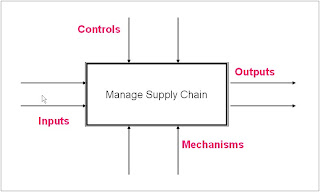
What is needed to manage a EWM project ?
R3 WM skills ?
In order to effectively manage a EWM implementation the following skill set is need:
1. Strong Core Interface (CIF). This is because EWM runs on the APO platform, all interface are managed via qRFC
2. Strong ERP Delivery processing, this is because interfacing between ERP and EWM is via Deliveries.
3. WM experience helps, limited benefit from WM considering that eWM is totally new solution, not an upgrade. Therefore you need Functional EWM resources that know eWM processes around delivery processing, RF, yard mgt, cross docking, Warehouse tasks/order, Quality Inspection engine and maybe interface PLC. This functionality is not present in std SAP R3 WM, totally new, 10 x more complex than old WM.
4. ABAP, BADI know how. Most EWM projects are enhanced. Must be able to provide guidance to ABAP developers.
5. SAP Architecture. Knowing how to manage distributed architecture, change request transportation, sizing ect…
The above defines the Functional EWM Consultant. For technical parts regarding developments, any senior ABAP developer will be OK. The EWM technical platform is no different to APO or R3. What is critical is that the Functional EWM Consultant must provide guidance to the developer in terms of which direction the custom development should go, it could be sufficient that a BADI will do the job. A weak functional consultant normally leads to excessive developments, complex developments and in certain cases modification to SAP standard resulting in excessive support effort.
Bottom line, a WM consultant without the above requirements will take some months to get up to speed. The training courses provided are quite limited.
Focus on strong functional EConsultant and good ABAP developer (don't look at the low cost, you pay for what you get)
A simple WM consultant is suitable for junior role, a person that can cover all above 5 requirements is ideal for project lead.
R3 WM skills ?
In order to effectively manage a EWM implementation the following skill set is need:
1. Strong Core Interface (CIF). This is because EWM runs on the APO platform, all interface are managed via qRFC
2. Strong ERP Delivery processing, this is because interfacing between ERP and EWM is via Deliveries.
3. WM experience helps, limited benefit from WM considering that eWM is totally new solution, not an upgrade. Therefore you need Functional EWM resources that know eWM processes around delivery processing, RF, yard mgt, cross docking, Warehouse tasks/order, Quality Inspection engine and maybe interface PLC. This functionality is not present in std SAP R3 WM, totally new, 10 x more complex than old WM.
4. ABAP, BADI know how. Most EWM projects are enhanced. Must be able to provide guidance to ABAP developers.
5. SAP Architecture. Knowing how to manage distributed architecture, change request transportation, sizing ect…
The above defines the Functional EWM Consultant. For technical parts regarding developments, any senior ABAP developer will be OK. The EWM technical platform is no different to APO or R3. What is critical is that the Functional EWM Consultant must provide guidance to the developer in terms of which direction the custom development should go, it could be sufficient that a BADI will do the job. A weak functional consultant normally leads to excessive developments, complex developments and in certain cases modification to SAP standard resulting in excessive support effort.
Bottom line, a WM consultant without the above requirements will take some months to get up to speed. The training courses provided are quite limited.
Focus on strong functional EConsultant and good ABAP developer (don't look at the low cost, you pay for what you get)
A simple WM consultant is suitable for junior role, a person that can cover all above 5 requirements is ideal for project lead.
 The purpose of this blog is to provide and discuss various topics around Supply Chain Management within the SAP SCM platform. By placing Supply Chain Management into context helps do define a structured approach in covering various SCM topics and provides a framework on how to maximize and exploit the SAP SCM tool. My experience in working in the Sap SCM environment is that in certain cases limited success has being achieved with the IT investment when implementing a SCM platform. In most cases it is not due to a SAP weakness but rather poor implementation, lack of vision and in certain cases lack of expertise. I have experienced costly multi million investment projects whereby all we did was replicate a legacy solution (in most cases homemade or Excel driven) within the SCM offering.
The purpose of this blog is to provide and discuss various topics around Supply Chain Management within the SAP SCM platform. By placing Supply Chain Management into context helps do define a structured approach in covering various SCM topics and provides a framework on how to maximize and exploit the SAP SCM tool. My experience in working in the Sap SCM environment is that in certain cases limited success has being achieved with the IT investment when implementing a SCM platform. In most cases it is not due to a SAP weakness but rather poor implementation, lack of vision and in certain cases lack of expertise. I have experienced costly multi million investment projects whereby all we did was replicate a legacy solution (in most cases homemade or Excel driven) within the SCM offering.